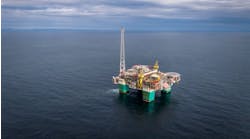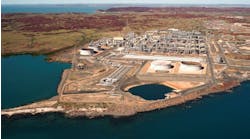Charting a consistent course through inconsistent times in offshore oil and gas
Randall Luthi
President
National Ocean Industries Association
I both appreciate and admire the incredibly innovative technology showcased annually at the Offshore Technology Conference in Houston. Technological advancements allow our industry to continue to produce oil and natural gas in increasingly harder to reach areas, both offshore and onshore. Because of these technological successes, the US is now the leading oil and gas producer in the world, and American consumers are reaping the benefits at the pump. Yet, 2016 has thus far proven painfully challenging for the offshore oil and gas industry as the severe market downturn persists on a global scale. In the US, the devastating economic blow to our offshore sector is being compounded by our own federal government, as the Obama administration advances its fear of climate change agenda through prohibitive policies and an onslaught of unnecessary and stricter regulations.
New and proposed regulations affecting the offshore oil and gas industry include thewell control rule, air quality rule, production safety systems rule, Arctic regulations, seismic acoustic criteria, and bonding and financial assurance guidelines. This onslaught of regulations combined with low commodity prices may very well result in further job losses. The well control rule alone could have unintended consequences that would most definitely have a negative impact on the US economy. The overly prescriptive nature of the rule has the potential to increase risk and reduce safety, which could lead to a de facto moratorium in the Gulf of Mexico. According to a Wood Mackenzie study, the proposed rule could put over 100,000 jobs at risk, cost the US economy upwards of $400 billion, and jeopardize as much as 35% of offshore energy production.
Federal lease holders, mainly in the GoM, have provided billions of dollars in revenue to the federal treasury and also provide much needed funds to state and local governments with production off their shores. As President of the National Ocean Industries Association (NOIA), I attended the most recent GoM lease sales in New Orleans, Louisiana. What I witnessed there was a study in contrasts: low-key interest from industry and historic interest from anti-fossil fuel activists. Both are unfortunate signs of the times.
In Central Planning Area Sale 241, just 30 companies submitted 148 bids on 128 tracts for a total of $156 million in high bids. Central Planning Area sales have historically been much larger. No bids at all were submitted in Eastern Planning Area Sale 226. These uncharacteristic sale results certainly reflect current market conditions. The sales also drew uncharacteristic attention from anti-fossil fuel activists, who turned out to loudly protest the proceedings, something rarely, if ever seen in the Gulf of Mexico. These activists marched on the Superdome and attempted to halt the sale proceedings. To add insult to injury, the environmental groups claimed it was their efforts that resulted in low industry turnout for the sale, even though the bids were submitted in advance, and all they witnessed was the reading of the bids.
Protests like “leave it in the ground” are encouraged by bad energy policy decisions, such as the administration’s recent backtrack on plans for an Atlantic sale in the upcoming 2017-2022 OCS Oil and Gas Leasing Program. The removal of the sale, proposed in federal waters off of Virginia, North Carolina, South Carolina, and Georgia, is a blow to future US energy security and forfeits thousands of well-paying jobs and millions of dollars in government revenues. The decision also slights the wishes of the states’ governors and their constituents, and is premature since we don’t really know the true extent of oil and natural gas resources off our Atlantic coast. It has been three decades since we last explored for oil and natural gas resources in the Atlantic OCS, and the short-sighted decision to remove the Atlantic sale likely means we won’t be drilling or producing there for at least a decade, if ever. Additionally, at the time of this writing, the fate of seismic surveys in the Atlantic OCS hangs in the balance, with the long-awaited necessary permits still pending.
The “leave it in the ground” movement is getting traction largely because we are not currently facing an energy crisis. But leaving useful oil and natural gas undeveloped is a myopic recipe for future economic and energy failure. Climate change concerns can be addressed through increased efficiency, common-sense regulations, and enhanced carbon capture. The fear of climate change should not overshadow the environmental, economic, and national security benefits of a broad-based energy policy.
As the Obama administration forges its legacy, it is holding back our nation’s energy independence through regulations and policies that deter the very industry innovations that make our nation’s energy success possible. Yet, the people of the US will continue to need both traditional and nontraditional forms of energy for the foreseeable future. Even taking growing renewable energy sources into account, traditional fuels, including oil and natural gas, are expected to supply more than about 88% of the world’s energy needs for at least the next generation. Despite today’s challenging market conditions, the offshore oil and gas industry stands ready and willing to help meet the need by producing reliable, affordable, and safe energy that improves our standard of living and has made the US a global energy leader. The question is will the US government allow us to do so?
About the author
Randall Luthi is President of the National Ocean Industries Association (NOIA), the only national trade association representing all segments of the offshore industry with an interest in the exploration and production of both traditional and renewable energy resources on the nation’s outer continental shelf.




